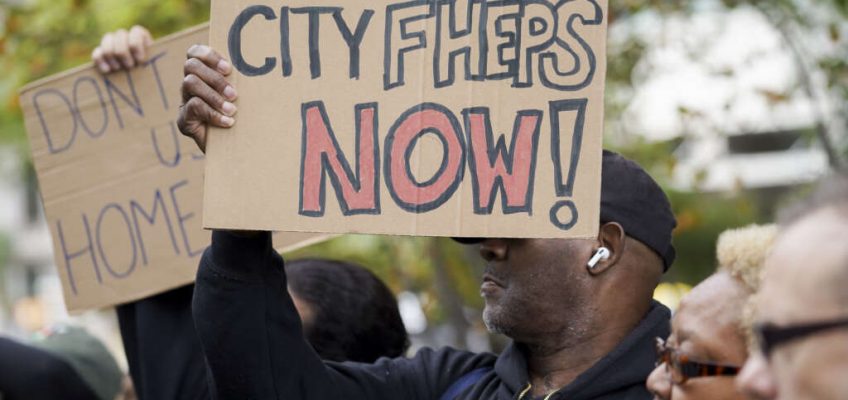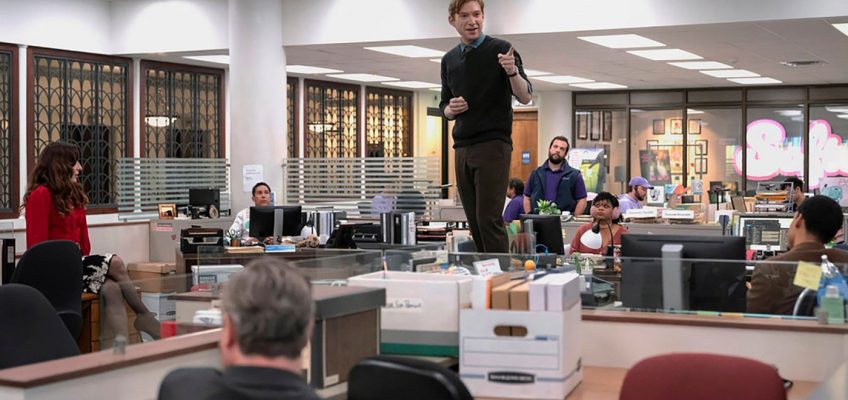After debuting the world’s largest cruise ship, it’s reasonable to think Royal Caribbean should pause for a moment of celebration.
The company did host a formal naming ceremony for its brand new Icon-class ship at Port Canaveral earlier in August, but that milestone doesn’t mean the cruise line has plans of slowing down anytime soon.
During a media sailing on Star of the Seas, Royal executives detailed plans for upcoming private destinations, a new class of ships and the design behind Perfect Day Mexico.
“We’re already deep into the design of a new class. We’re constantly looking at designing for the future,” said Michael Bayley, president and CEO of Royal Caribbean International. “A whole group of us probably spend 50% of our work day designing for the future of Royal Caribbean, either destinations or ships. It’s fantastic, it’s a lot of fun.”
Pictures: A first look on board the world’s largest cruise ship
The planned openings of new private destinations are helping to transform Royal Caribbean from a traditional cruise line into a full-fledged vacation company, Bayley said.
“When we started developing the private destinations and designing ships like Icon, we recognized that this was no longer, in any way, a traditional cruise,” he said. “It was a brand new collection of experiences that transcended cruise and moved into land-based vacation options.”
The company has ships and destination openings planned out as far as 2028, meaning that cruise fans will have a lot to look forward to in the coming years.
This rendering shows Royal Caribbean’s Legend of the Seas, set to debut in summer 2026. (Courtesy Royal Caribbean)
New ships ahead
Some of Royal’s upcoming plans discussed in a media information session onboard Star of the Seas weren’t new news. For example, it’s already publicly known that the company’s third Icon-class ship, Legend of the Seas, is set for a 2026 debut and will sail out of Fort Lauderdale in the fall after Mediterranean itineraries next summer.
Royal is also working on its fourth Icon-class ship, which is already under construction and will feature a “pretty ambitious set” of new activities and features that passengers can enjoy when the ship debuts in 2027. The Icon class could potentially include a fifth and sixth ship.
“You’re going to see us continue to evolve the class,” said Jay Schneider, Royal Caribbean’s chief product innovation officer. “As we get to Legend of the Seas, The Pearl will take on a new dynamic inside of it that we’re unbelievably excited about.”
The Royal Caribbean Utopia of the Seas passes Jetty Park while making its inaugural arrival at Port Canaveral in 2024. (Joe Burbank/Orlando Sentinel)
In the coming years, the cruise line will continue to expand on the success of its Oasis class, which currently includes Port Canaveral’s Utopia of the Seas that sails short itineraries to the Bahamas.
“Building off the success of the Oasis class, we want to keep on going. Utopia has been a phenomenal success for us with the three- and four-night program out of Port Canaveral,” Schneider said of the sixth ship in its class. A seventh unnamed ship is due in 2028. “We’ve already committed to the name and the enhancements that are coming with Oasis 7.”
Schneider also confirmed development of Royal’s new Discovery series, which will be a smaller class of ships than Icon.
“We’re more in the dreaming phase,” he said. “We’re dreaming up future classes of ships that are big and small, you name it. We’re in a heavy ship dreaming phase right now.”
Royal Caribbean
Royal Caribbean International’s first Royal Beach Club, located in Nassau, won approval to move forward from the government of the Bahamas. The 17-acre Royal Beach Club at Paradise Island is set to open in 2025. (Courtesy Royal Caribbean)
Royal Beach Clubs in the works
The first of Royal Caribbean’s beach clubs, which was unveiled in 2023, is slated to open in Nassau this fall. Vacationers can now book day passes to the Royal Beach Club Paradise Island, which will welcome its first revenue guests on Dec. 27.
“Beach clubs are day beach clubs in high-volume ports where a percentage of our guests go, but not all of them,” Schneider said, comparing the new offering to the Perfect Day products, which almost all ship guests visit. “About 35% of our guests will have an opportunity to go there on an annual basis.”
After a short tender boat ride from the port, guests can enjoy three neighborhoods: one geared toward families, another for partying and a chill area. Visitors can find two beaches and three pools, including what will be the world’s largest swim-up bar. Food and drink offerings can be found at three beach grills and 10 bars.
A map shows the current and planned private destinations for Royal Caribbean cruise guests. (Courtesy Royal Caribbean)
“The Royal Beach Club is a combo of everything that people want to do if they spend the day on the beach,” Bayley said. “One of the great attributes of the beach club is the world’s largest swim-up bar. The vibe will be E for Everyone. The kids will have spaces and places where they can have a great time.”
Royal Beach Club expands with a Cozumel, Mexico, location in 2026 and a new destination in Lelepa, an island in the South Pacific, slated to open in 2027 for Australian cruisers.
Loco Waterpark will feature more than 30 slides, including one shaped like a sombrero at Royal Caribbean’s Perfect Day Mexico is a 200-acre private destination resort being constructed at the port of Costa Maya, Mexico. It’s set to open in fall 2027. (Courtesy Royal Caribbean)
Perfect Day Mexico
After opening Perfect Day at CocoCay in the Bahamas in 2019, Royal Caribbean is eyeing a new Perfect Day destination in Mexico. Set to open in the fall of 2027, the new private enclave is set in Mahahual in the state of Quintana Roo — home to the port of Costa Maya — and will have double the amount of guest-facing space as the existing Perfect Day offering in the Bahamas.
The focal point of the destination is the Loco Waterpark with the tallest waterslides in the Americas. Thrill seekers can explore 31 slides across 5 towers, the tallest of which features a Jaguar head and flames shooting out of the top.
The extra-cost Costa Beach Club will offer private cabanas, an infinity pool and premium dining along with its own beach at Royal Caribbean’s Perfect Day Mexico, a 200-acre private destination resort being constructed at the port of Costa Maya, Mexico. It’s set to open in fall 2027. (Courtesy Royal Caribbean)
Among Perfect Day Mexico’s seven major neighborhoods is Splash Cove, which is slated to feature the world’s longest lazy river. Schneider said the waterway will also feature a “crazy river” option in one segment and a swim-up bar that visitors can enjoy during the one-hour journey.
The destination will also feature the world’s largest sombrero that will serve as the roof of a margarita-centric bar. Similar to Perfect Day at CocoCay’s Hideaway Beach, Perfect Day Mexico will include El Hideaway for adults only and the premium Costa Beach Club to the north of the main attractions.
Royal Caribbean provided this promotional rendering for its forthcoming resort, Perfect Day Mexico, coming in 2027. (Courtesy Royal Caribbean)
Concerns about the environmental impacts of the projects have spurred a petition on Change.org that has nearly 300,000 signatures. The petition calls for the project to adopt a model based on “sustainability, respect for ecosystems and justice for local communities.”
Royal Caribbean responded to the petition by vowing to submit an Environmental Impact Statement to “relevant authorities” in the coming weeks and host community meetings. Among sustainability initiatives promised by Royal are mangrove conservation, water flow restoration, reef protection and a waste management system that results in more than 95% of treated water being available for “beneficial reuse.” In addition, the company has pledged to use “100% green energy to power our site by 2040.”
Find me @PConnPie on Instagram or send me an email: pconnolly@orlandosentinel.com.



